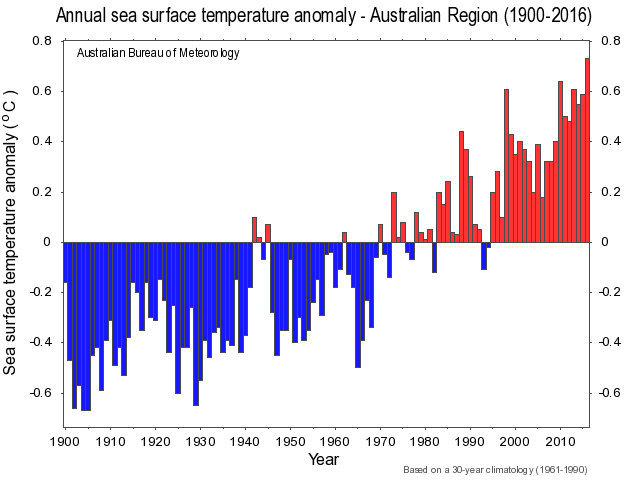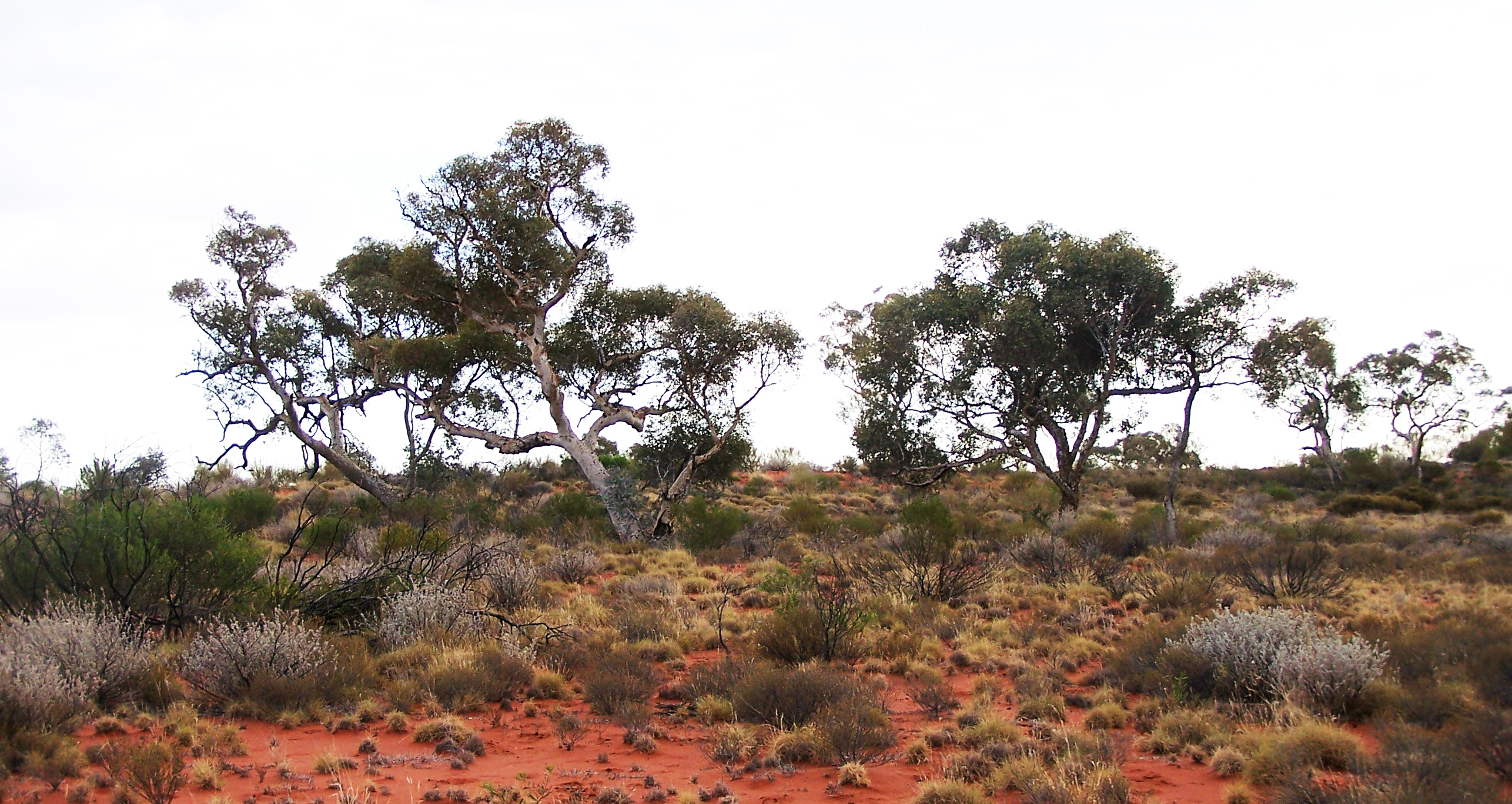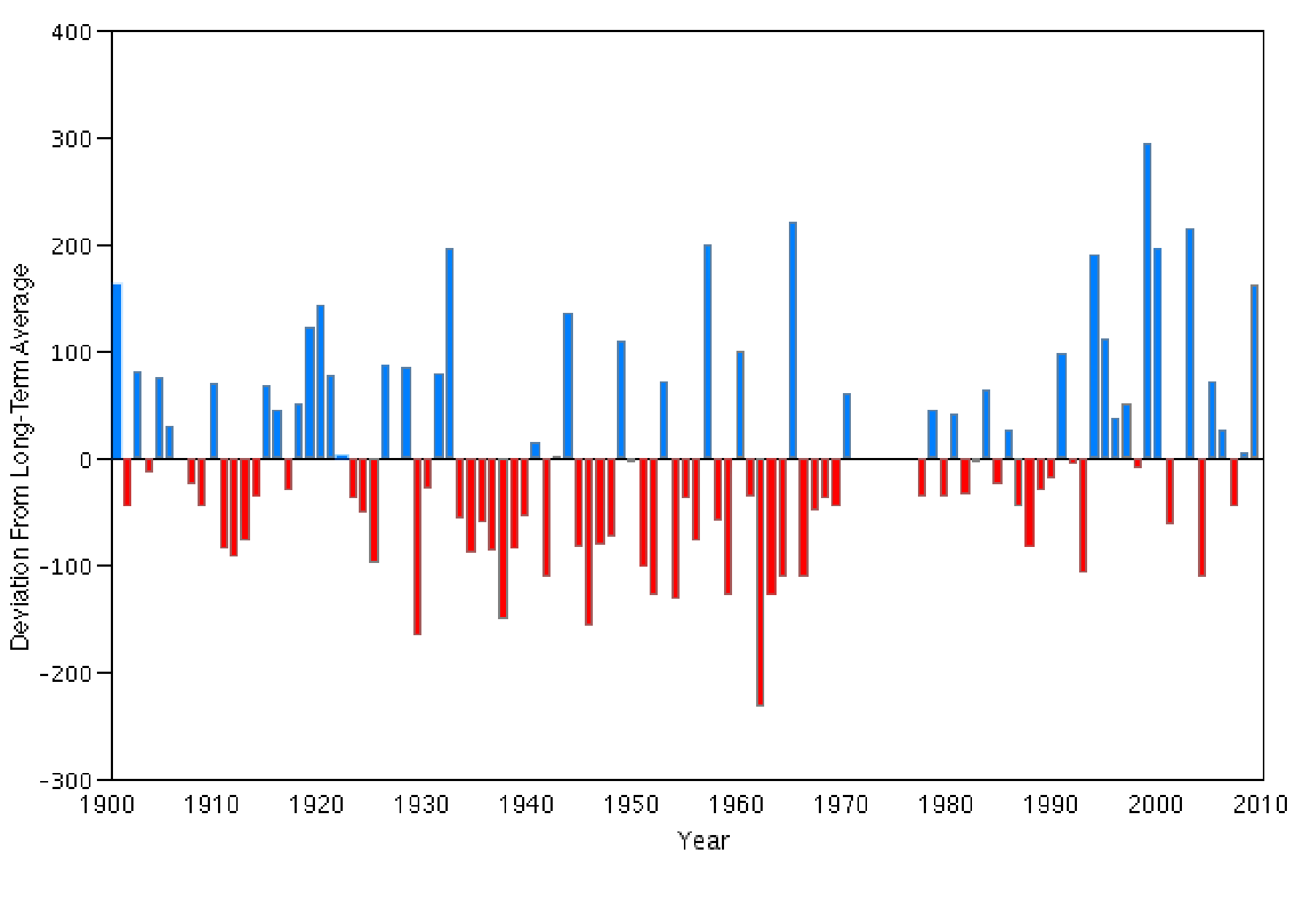|
Global Climate Change © Eric R. Pianka The Australian Bureau of Meterology compiles trend maps showing changes in temperature and rainfall over decades -- in the past several decades, the continent has been hard hit by global warming as evidenced by annual average sea surface temperatures. 
The long-term average annual precipitation (30 years from 1961-1990) for the Great Victoria Desert has been less than 200 mm (map shown below). Moreover, whereas average annual rainfall over the past few decades has fallen drastically over the eastern 2/3rds of the continent, precipitation has increased in the interior of Western Australia. During the last 4 decades, rainfall in this part of the GVD has increased by 20-30mm per decade above the long-term average (Australian Bureau of Meterology map of deviations in precipitation from 1970 to the present). 
In 2003, I was stunned when I did not recognize my long-term study areas and actually drove right past them because shrubs had increased so greatly in abundance! Spinifex, a vital microhabitat for many lizard species, has diminished with the increased abundance of shrubs. As a result of this increased rainfall, shrub encroachment seems to have changed these ecosystems profoundly. 
The changing vegetation appears to have affected both avian and lizard populations, and most likely has also impacted arthropod populations upon which birds and lizards depend for food. Old photographs of study sites will be compared with recent ones to document these changes in the vegetation. Changes in the relative abundances of lizard species and in their diets over these two decades will constitute further evidence of global climate change.
|
|
Because lizards are sedentary terrestrial ectotherms, they are very sensitive to temperature -- they respond rapidly to climatic change and can be used to monitor global warming. Recent studies suggest that behavioral thermoregulation may enable ectotherms to adapt to global warming by shifting their seasonal patterns of activity and reproduction (Kearney et al. 2009; Huey and Tewksbury 2009). My extensive data on day and time of activity, microhabitat, ambient air temperatures and active body temperatures for 12,000 desert lizards (82 species) will allow tests of the assumptions and predictions of their energy-mass balance models. In addition, my long-term (1966-2008) data on reproduction in Australian desert lizards will allow me to detect any such temporal shifts in reproductive cycles over a 42-year time interval.
|
|
Climate change appears to have altered the fire regime in the GVD as well: during the last two decades, fires have been more frequent and much more extensive than they were during the 1970's to the 1990's (Haydon et al. 2000a, 2000b). This new fire regime may result in a more homogeneous landscape, which could reduce habitat heterogeneity and species diversity, and might even lead to local extinctions (see also Pianka and Goodyear (2012) and Fire Succession on the B-area). References Goodyear, S. E. and E. R. Pianka. 2011. Spatial and temporal variation in diets of sympatric lizards (genus Ctenotus) in the Great Victoria Desert, Western Australia. J. Herpetology 45: 265-271. Read On Line. Download pdf Haydon, D. T., J. K. Friar, and E. R. Pianka. 2000a. Fire Driven Dynamic Mosaics in the Great Victoria Desert I: Fire Geometry. Landscape Ecology 15: 373-381. Download pdf. Haydon, D. T., J. K. Friar, and E. R. Pianka. 2000b. Fire Driven Dynamic Mosaics in the Great Victoria Desert II: A spatial and temporal landscape model. Landscape Ecology 15: 407-423. Download pdf. Huey, R. B. and J. J. Tewksbury. 2009. Can behavior douse the fire of climate warming? Proc. Nat. Acad. Sci. 106: 3647-3648. Kearney, M., R. Shine, and W. Porter. 2009. The potential for behavioral thermoregulation to buffer "cold-blooded" animals against climate warming. Proc. Nat. Acad. Sci. 106: 3835-3840. Masters, P. 1996. The effects of fire-driven succession on reptiles in spinifex grasslands at Uluru National Park, Northern Territory. Wildlife Research. 23: 39-48. Pianka, E. R. 1989. Desert lizard diversity: additional comments and some data. American Naturalist 134: 344-364. Download pdf. Pianka, E. R. 1996. Long-term changes in Lizard Assemblages in the Great Victoria Desert: Dynamic Habitat Mosaics in Response to Wildfires. Chapter 8 (pp. 191-215) in M. L. Cody and J. A. Smallwood (eds.) Long-term studies of vertebrate communities. Academic Press. Download pdf. Pianka, E. R. and S. E. Goodyear. 2012. Lizard responses to wildfire in arid interior Australia: Long-term experimental data and commonalities with other studies. Austral Ecology 37: 1-11. Download pdf Pianka, E. R. 2012. Can humans share spaceship earth? ("Point of View") Amphibian and Reptile Conservation 6(1): 1-24(e49). Download Low-res. pdf (1.5 megs). High-res. pdf (3.9 megs). Text Only Version (2.8 megs). |
 Figure. Precipitation at Laverton, Western Australia, over the last Century.
The long-term average annual rainfall is represented by the horizontal line. Red bars
indicate years with below average rain whereas blue bars show above average years.
Figure. Precipitation at Laverton, Western Australia, over the last Century.
The long-term average annual rainfall is represented by the horizontal line. Red bars
indicate years with below average rain whereas blue bars show above average years.